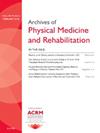It's All About Communication! Teaching Researchers to Talk to Clinical Collaborators
IF 3.6
2区 医学
Q1 REHABILITATION
Archives of physical medicine and rehabilitation
Pub Date : 2025-05-01
DOI:10.1016/j.apmr.2025.03.006
引用次数: 0
Abstract
Effective clinician-researcher partnerships rely on clear communication, yet these two groups often struggle to speak a common language. We have developed what we term, "The IdeaLab," an initiative of Shirley Ryan AbilityLab and the Center for Smart Use of Technology to Assess Real World Outcomes (C-STAR), that provides a platform for investigators to present early-stage research ideas and receive expert guidance from clinicians. From 2021-2024, we held 20 IdeaLabs with an average of 35 employees per event (35.4±10.2). Participants included 45.6% Researchers/Engineers, 32.6% Allied Health, 11.4% Other staff, 9.0% Physicians, and 1.3% Registered Nurses (n=708). The success of these events hinges on presenters effectively communicating their research ideas to the interdisciplinary audience to produce valuable discussions of usability, feasibility, clinical applicability and potential impact. Drawing from our experience, we identified three key concepts and incorporated them into a template for successful IdeaLab presentations: (1) Start with the idea. Presenters must concisely articulate their idea and their understanding of its significance. (2) Simplify the content. Presenters must provide essential information with minimal technical jargon. Overly detailed methodology distracts from the clinical need and impact. (3) Focus on the nail. Presenters should aim to identify real clinical problems and tailor their solution ("the hammer") accordingly to increase the potential for impact. For some investigators, the IdeaLab may be their first meaningful interaction with clinical counterparts. By equipping researchers with effective interdisciplinary communication skills, we foster a culture of collaboration that empowers both researchers and clinicians to address real-world challenges for rehabilitation populations.
这一切都是关于沟通!教研究人员与临床合作者交谈
有效的临床医生和研究人员的合作关系依赖于清晰的沟通,然而这两个群体往往难以使用共同的语言。我们开发了一个我们称之为“理想实验室”的项目,这是雪莉·瑞安能力实验室和智能使用技术评估现实世界结果中心(C-STAR)的一项倡议,它为研究人员提供了一个平台,让他们展示早期的研究想法,并接受临床医生的专家指导。从2021年到2024年,我们举办了20场IdeaLabs,平均每场活动35名员工(35.4±10.2)。参与者包括45.6%的研究人员/工程师、32.6%的联合健康、11.4%的其他工作人员、9.0%的医生和1.3%的注册护士(n=708)。这些活动的成功取决于演讲者有效地将他们的研究想法传达给跨学科的观众,以产生关于可用性、可行性、临床适用性和潜在影响的有价值的讨论。根据我们的经验,我们确定了三个关键概念,并将它们整合到IdeaLab成功演示的模板中:(1)从想法开始。演讲者必须简明扼要地表达他们的观点和他们对其重要性的理解。(2)简化内容。演讲者必须用最少的技术术语提供必要的信息。过于详细的方法分散了临床需要和影响。(3)注意指甲。演讲者应该致力于识别真正的临床问题,并相应地调整他们的解决方案(“锤子”),以增加潜在的影响。对于一些研究人员来说,理想实验室可能是他们与临床同行的第一次有意义的互动。通过为研究人员提供有效的跨学科沟通技巧,我们培养了一种合作文化,使研究人员和临床医生能够解决康复人群面临的现实挑战。
本文章由计算机程序翻译,如有差异,请以英文原文为准。
求助全文
约1分钟内获得全文
求助全文
来源期刊
CiteScore
6.20
自引率
4.70%
发文量
495
审稿时长
38 days
期刊介绍:
The Archives of Physical Medicine and Rehabilitation publishes original, peer-reviewed research and clinical reports on important trends and developments in physical medicine and rehabilitation and related fields. This international journal brings researchers and clinicians authoritative information on the therapeutic utilization of physical, behavioral and pharmaceutical agents in providing comprehensive care for individuals with chronic illness and disabilities.
Archives began publication in 1920, publishes monthly, and is the official journal of the American Congress of Rehabilitation Medicine. Its papers are cited more often than any other rehabilitation journal.

 求助内容:
求助内容: 应助结果提醒方式:
应助结果提醒方式:


